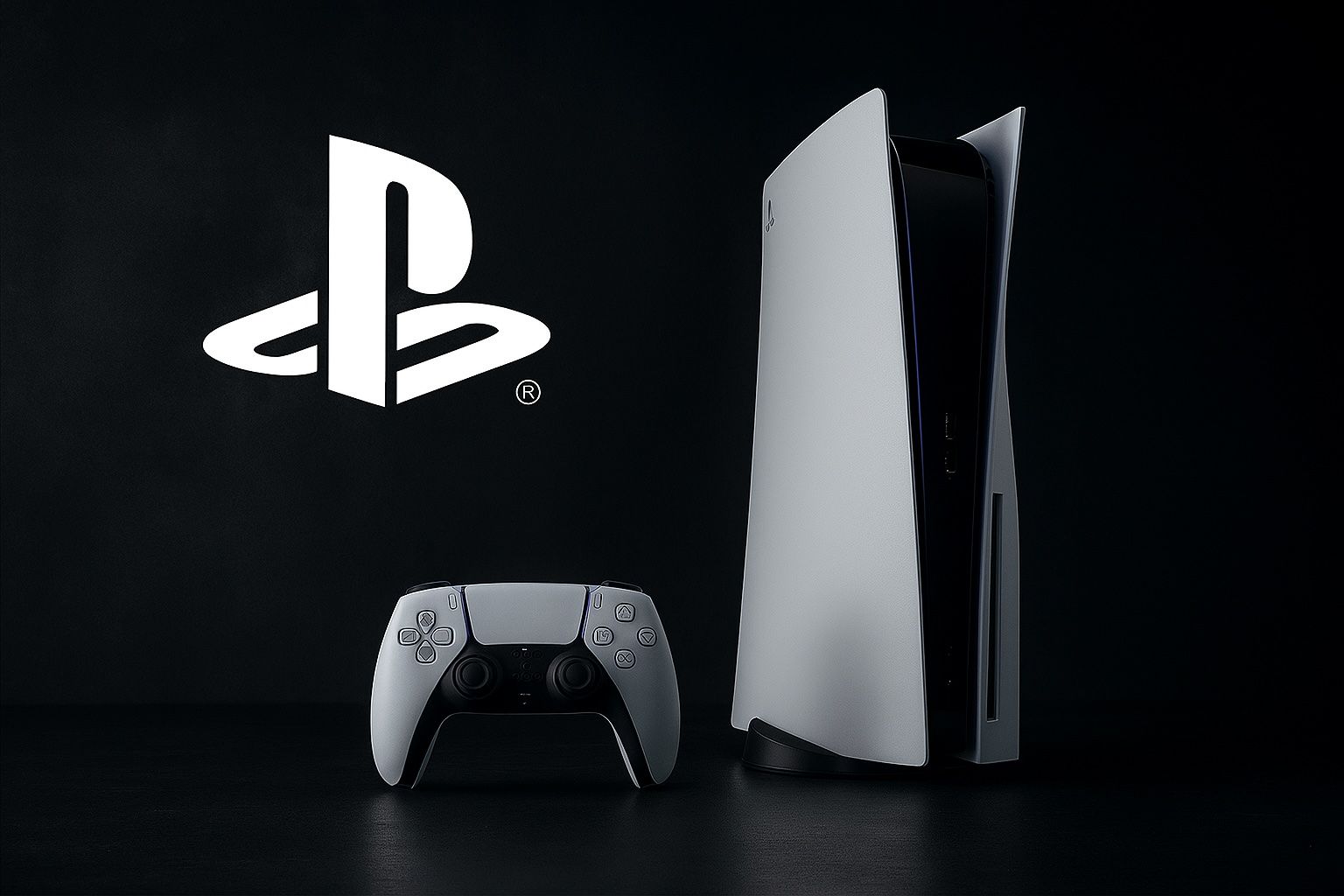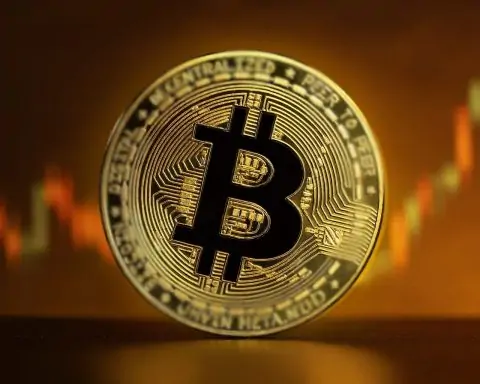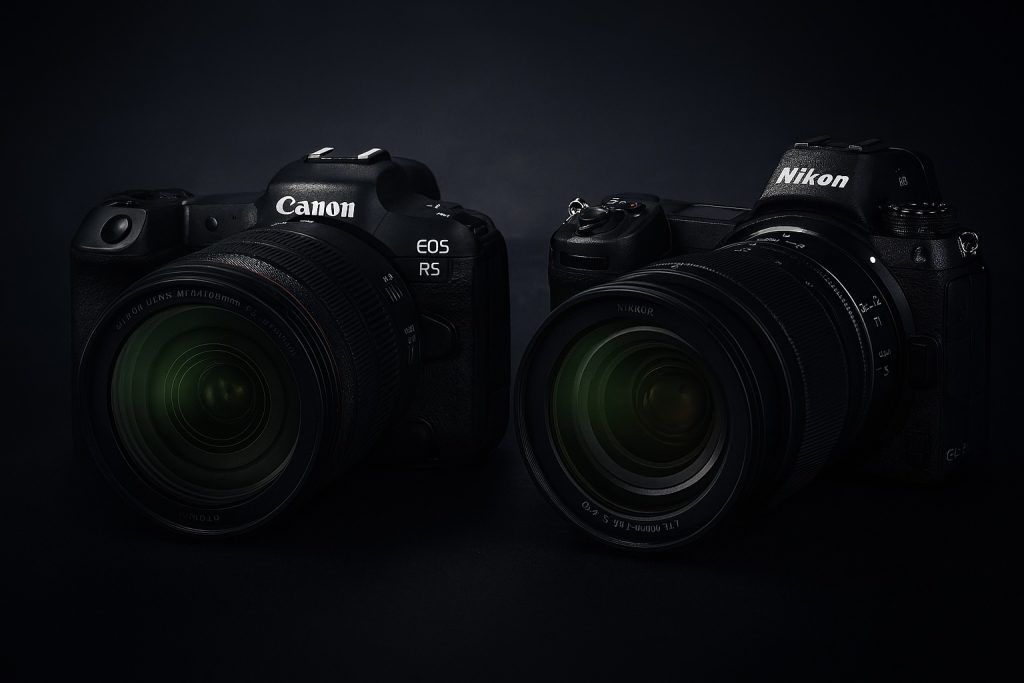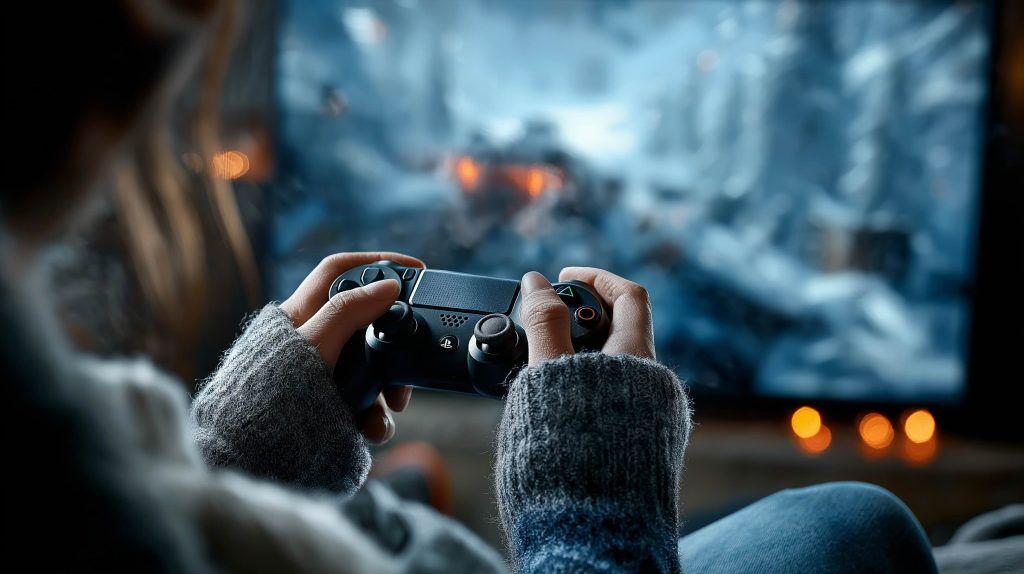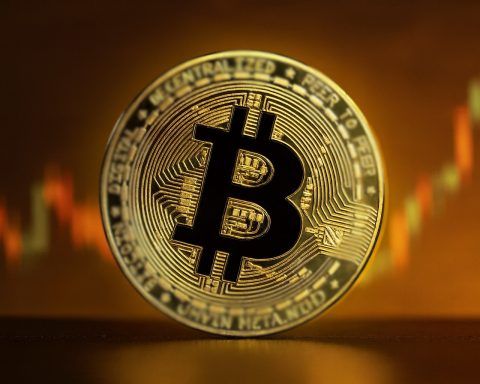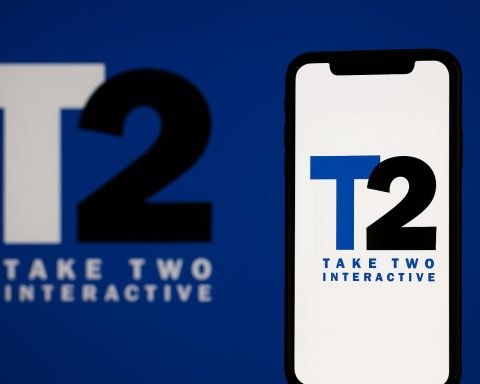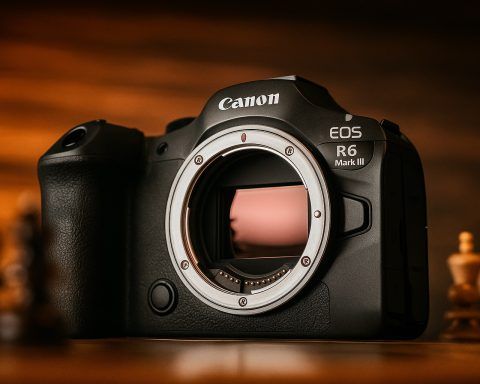- Sony confirmed PS6 development is underway, with CEO Hideaki Nishino saying in mid-2025 that the ‘next generation console strategy’ is top of mind and PS6 is ‘one of their main priorities’.
- Analysts and regulators peg a PS6 release around 2027–2028, with Microsoft also expecting a 2028 window.
- Sony filed trademarks for PS6 through PS10 as early as 2019, signaling intent to extend the PlayStation line for multiple generations.
- The PS6 is expected to use a custom AMD Zen CPU (likely Zen 5 or Zen 6) with 8 or more cores on a 3nm or 2nm process.
- The GPU is anticipated to be a future AMD RDNA 5 class, potentially labeled RDNA 5 or UDNA, with 28–32 compute units and AI acceleration.
- Unified RAM is expected to be 24–32GB, higher than PS5’s 16GB.
- Storage is predicted to be a 2TB (or larger) PCIe/NVMe SSD, with fast load times and potential NVMe expansion.
- Backward compatibility is a major focus, with patents describing hardware tuning to run legacy PS4/PS5 titles on PS6.
- New features include PlayStation Spectral Super Resolution (PSSR) for AI upscaling that could enable 4K at 120fps or 8K at 60fps.
- There are rumors of two PS6 launch models and a portable handheld companion—about a 15W 3nm chip with 28–32 RDNA5 CUs and 16GB LPDDR5X RAM intended to play PS6 games natively.
The PlayStation 5 is still going strong, but Sony already has its eyes on the future. Rumors and official hints about the PlayStation 6 (PS6) are piling up, giving gamers plenty to speculate about. From executive comments and patent filings to insider leaks, we’re starting to get an idea of what the next-gen PlayStation might bring. In this report, we’ll break down everything currently known about the PS6 – including official statements from Sony, credible leaks on hardware specs and features, expected release timing, expert quotes, and how it might stack up against the next Xbox and Nintendo’s plans. (Spoiler: Sony is definitely thinking ahead, and so should we.)
Sony Confirms PS6 Development Is Underway
Sony has essentially confirmed that the PlayStation 6 is in development and a top priority internally. In mid-2025, Sony Interactive Entertainment CEO Hideaki Nishino stated that the company’s “next generation console strategy” is already “top of mind” [1]. He noted that while details can’t be shared yet, there is “huge interest” in what comes after the PS5 – a clear sign Sony is actively planning for the PS6. In fact, Nishino said outright in a June 2025 fireside chat that the PS6 is “one of their main priorities” at the company [2].
This isn’t surprising – console development cycles are long. Hardware teams typically begin working on the next console soon after the current one launches. As one Sony insider quipped, “the hardware teams start working on the next gen pretty much right after they launch the current gen” [3]. The PS5 is now about five years old, so R&D for the PS6 is well underway behind closed doors. In fact, former PlayStation executive Shuhei Yoshida recently acknowledged that the PS5 generation was slowed by supply issues, and said “if the next PlayStation comes out in 2028, that feels right to me”, aligning with a typical 7-8 year cycle [4].
Sony’s own statements reinforce that timeline. In early 2024, SIE Senior VP Naomi Matsuoka told investors “PS5 will enter the latter stage of its life cycle” [5]. That implies Sony is looking ahead to new hardware. Indeed, during a legal deposition in mid-2023, PlayStation CEO at the time Jim Ryan even discussed how Sony would handle sharing PS6 details with third-party studios. Ryan stated that if Activision Blizzard were acquired by Microsoft, “Sony couldn’t tell Activision about its next console”, i.e. the PS6, due to confidentiality concerns [6]. In other words, Ryan openly acknowledged a “next console” exists in their roadmap – he just didn’t want to risk those details leaking to a competitor. All of these signals point to one thing: the PS6 is real, and Sony is actively working on it.
It’s also worth noting that Sony has literally trademarked the names “PS6” through “PS10” in advance [7]. This legal filing (done as early as 2019) doesn’t mean the PS6 is being released soon, but it shows Sony’s intent to continue the PlayStation line for many generations. In short, the PlayStation 6 is no longer just a fantasy – it’s on the drawing board at Sony’s R&D labs, if not already in prototype form.
Expected Release Date: When Will the PS6 Arrive?
When can we actually expect the PlayStation 6 to launch? The consensus from multiple credible sources is around 2027 or 2028. Nothing is officially announced yet, but several clues give us a timeframe:
- Sony’s Hints: Documents from Sony surfaced during regulatory battles (like the Activision-Blizzard acquisition hearings) strongly suggest a 2027-2028 window. In one Sony submission to UK regulators, the company implied its “next generation PlayStation console (likely to occur around [redacted])” would arrive after 2027 [8]. The context was a concern that if Call of Duty left PlayStation in 2027, by the time PS6 launched, PlayStation would be at a competitive disadvantage. Observers connected the dots that the redacted date was around 2027 or shortly after.
- Microsoft’s Expectation: Interestingly, Microsoft also expects the PS6 around 2028. During the Microsoft vs. FTC hearing in 2023, Microsoft stated that its offered 10-year Call of Duty deal to Sony would “go beyond the expected starting period of the next generation of consoles (in 2028)” [9]. In other words, Microsoft assumed new Xbox and PlayStation consoles would land in 2028, and planned its contracts accordingly. This confidence was notable – it suggests both Sony and Microsoft were roughly aligned on a late-decade generational shift.
- Insider Reports: Industry insiders back this up. Renowned leaker Tom Henderson reported that his sources also point to 2028 for PS6’s release [10]. Another leak from late 2022 indicated Sony had plans for a new console “by 2027” [11]. And in early 2024, former SIE president Shuhei Yoshida, while not speaking for Sony, mused that “the PS5 generation was slowed… If the next PlayStation comes out in 2028, that feels right” [12].
- Historical Cycle: Past console generations lend credence to this timeline. The PS4 launched in 2013 and PS5 in 2020 (7 years apart), and before that PS3 to PS4 was 7 years. A similar 7-8 year cycle from the PS5’s 2020 debut would land the PS6 in 2027 or 2028. Sony itself has said the PS5 is roughly “halfway through its life” as of 2023 [13] [14], implying a life cycle of about 7 years. 2027 would mark 7 years of PS5, and 2028 would be year 8.
All signs point to late 2027 at the earliest, more likely 2028 for the PlayStation 6. For now, Sony has not committed to any date publicly (and plans could always shift). But based on what we know, late this decade is the target. As one gaming journalist put it, “we wouldn’t put money on 2027 for sure, but anything from late 2027 onward feels like a safe bet” [15]. In fact, the safe money is on 2028 for a full next-gen launch [16], giving the PS5 a healthy run and lining up with competitor expectations.
Hardware Specs: What Kind of Power to Expect
While official specs are under wraps, credible leaks and industry trends paint an exciting picture of the PS6’s hardware. Sony’s philosophy with new consoles is to deliver a substantial leap in performance and capabilities, and the PS6 should be no exception. Here’s what rumors and expert predictions suggest about the PS6’s tech under the hood:
- Continued AMD Partnership: It’s virtually certain that Sony will once again team up with AMD for the PS6’s CPU/GPU, as they did with PS4 and PS5. Multiple sources confirm this. For instance, tech insider Moore’s Law Is Dead stated with “100% certainty” that Sony will stick with AMD processors/graphics in the PS6 [17]. AMD’s roadmap aligns well with a 2027-2028 console – in fact, Intel reportedly tried to bid for the PS6 chip contract but lost out to AMD back in 2022 [18]. This means the PS6 will likely use a custom AMD system-on-chip, benefiting from AMD’s next-gen CPU and GPU architectures for high performance and easier backward compatibility.
- CPU – Likely Zen 5 or Zen 6: Sony hasn’t decided (at least as of the latest leaks) between using AMD’s Zen 5 or Zen 6 CPU architecture [19]. By 2027, Zen 6 will be cutting-edge. Rumors suggest the PS6 could use an 8-core (or greater) Zen 6 CPU, built on an advanced 3nm or 2nm process node for efficiency and speed [20]. In plain terms, expect a processor significantly more powerful than the PS5’s 8-core Zen 2 – delivering higher frame rates, more complex game worlds, and advanced physics/AI computations.
- GPU – Radeon RDNA 5/“UDNA”: On the graphics side, leaked info points to the PS6 using a future AMD Radeon architecture, likely RDNA 5 (since PS5 was RDNA 2). One leak claims AMD’s next architecture after RDNA 4 is nicknamed “UDNA”, and that both the PS6 and next Xbox will use it [21]. This would align with an “RDNA 5” generation GPU. It’s expected to be a huge jump in GPU power, possibly 20%+ faster than the upgraded PS5 Pro’s graphics [22]. Some early spec rumors suggest a chip with an “early fork of gfx13 (RDNA 5)” and even mention 28–32 compute units with advanced ray tracing and AI acceleration [23]. In short, the PS6’s graphics processor will easily eclipse the PS5’s capabilities, enabling higher resolutions, frame rates, and richer visuals (think true 4K at high fps, or even 8K support for those with fancy TVs).
- Memory (RAM): No hard leaks on memory yet, but it’s logical to expect at least 24GB or 32GB of unified RAMin PS6. (The PS5 has 16GB.) This extra memory will help drive 4K (and higher) resolutions with detailed assets and allow more going on in games at once. One rumor claims a potential PS6 portable device might use 16GB of LPDDR5X memory [24] – so the main console would likely have significantly more, possibly GDDR6X or newer memory technology for extreme bandwidth.
- Storage (SSD): Sony made waves with the PS5’s ultra-fast SSD, virtually eliminating loading times. For PS6, expect an even larger and faster SSD. Developers will crave more space as game install sizes grow, so predictions land around 2TB (or more) of built-in SSD storage [25]. The drive will certainly support the latest PCIe/NVMe standards (by 2028 maybe PCIe 5.0+), meaning even faster load speeds and asset streaming. Sony may continue with the strategy of user-expandable storage via NVMe drives as well.
- Two SKUs or SoCs?: An intriguing rumor suggests Sony might be preparing two different system-on-chip (SoC) designs for the PS6 generation [26]. This has led to speculation that there could be two PS6 modelsat launch – for example, a high-end version and a lower-end version – rather than just a single console (similar to Microsoft’s Xbox Series X and S strategy). Alternatively, one of those chips could be for a separate device (more on the handheld rumors later). If two console variants happen, Sony could aim to hit two price points and audiences: one premium 4K/120fps beast, and one more affordable model that still plays all the same games at lower specs. This is speculative but backed by the reported dual-chip development.
In summary, the PS6 is expected to be a technical powerhouse, with a custom AMD Zen CPU and RDNA 5 GPU that dwarf the PS5’s “ancient” (by then) Zen 2/RDNA2 hardware [27]. Native 4K at high frame rates will likely be standard, 8K resolution output may be supported (for the very few who use it), and advanced graphical techniques like real-time ray tracing and AI-driven upscaling will be featured. One exciting leaked feature is something called PlayStation Spectral Super Resolution (PSSR) – a proprietary upscaling tech that could allow games to run at 4K 120fps or 8K 60fps with impressive image quality [28]. This tech was introduced in the PS5 Pro and is expected to be even more potent on PS6.
Crucially, backward compatibility appears to be a major focus for Sony’s next-gen hardware design. A newly published Sony patent describes a method for “tuning a new device’s hardware to run legacy applications” via special backward-compatibility modes [29]. In simpler terms, Sony patented a system to dynamically adjust the PS6’s hardware performance to perfectly emulate older consoles (like running PS5/PS4 games without glitches or sync issues). This points to the PS6 likely supporting hardware-level backward compatibility for previous PlayStation generations [30]. In fact, that patent specifically mentions using customized operating parameters (CPU/GPU timing, etc.) to ensure older games run smoothly on new hardware [31]. This aligns with rumors that PS6 will use an AMD chip specifically designed to accommodate backwards compatibility [32], potentially letting PS6 play titles from PS5, PS4, and maybe even earlier eras. Sony seems determined to avoid the compatibility issues that plagued transitions like PS3→PS4.
To sum up the spec picture: expect the PS6 to pack cutting-edge silicon – an AMD Zen 5/6 CPU, an RDNA 5-class GPU, more memory and ultra-fast storage – delivering a generational leap in power. Developers and tech experts anticipate it will “easily eclipse what the PS5 is currently capable of” [33], enabling bigger, prettier, and more immersive gaming experiences than ever. Of course, until Sony reveals official specs (likely a year or two before launch), these details are subject to change. But the leaks so far give us a tantalizing glimpse of a true next-gen beast in the making.
New Features and Innovations in the PS6
Hardware specs aside, what new features and improvements will the PlayStation 6 bring? While specifics are still under wraps, there are plenty of hints about Sony’s direction. The PS6 generation could introduce advances in controller technology, cloud integration, AI features, and overall user experience. Here’s what we know or can reasonably expect:
- Enhanced Controller Tech: Sony revolutionized gamepads with the PS5’s DualSense – featuring adaptive triggers and advanced haptics. For PS6, Sony will likely double down on this tactile immersion. In fact, Sony has filed patents that hint at even more innovative controller features. One patent describes adding “virtual buttons” on controllers that work with finger gestures [34]. Imagine a future DualSense where touch-sensitive areas or configurable buttons adapt to different games, or where you can perform gestures on the controller for certain commands. Sony also patented tech for controllers to detect finger placement and even adjust virtual input accordingly. We might see a DualSense 2.0 with more sensitive haptics, better adaptive trigger feedback, and perhaps new input methods (like a touch screen or paddle buttons) inspired by these filings. While specifics aren’t confirmed, Sony’s R&D shows they’re exploring ways to make the PS6 controller even more immersive and versatile than the PS5’s already impressive pad.
- Cloud Gaming Integration – But Not Reliant: The PS6 will arrive in a gaming landscape where cloud streaming is more prominent than it was in 2020. Sony is cautiously embracing cloud gaming as a complement to hardware, but not a replacement. In a June 2025 briefing, SIE’s Hideaki Nishino stressed that local console play will remain central, noting that while cloud tech is improving, “relying on cloud gaming is risky” due to internet variability and cost [35]. He noted cloud streaming costs more per hour than local play and that Sony “cannot control internet stability everywhere” [36]. So, expect the PS6 to still be a powerful home console that runs games locally (as opposed to a thin-client streaming box). However, Sony does plan to use the cloud in smart ways. Another executive, SVP Lynn Azar, revealed that Sony is working on letting people stream PS6 games over PlayStation Plus to older hardware like PS4/PS5 [37]. In effect, PS6 games could be played on a PS5 via cloud streaming if you don’t have a PS6 yet. This would mirror how some Xbox cloud features work and ensures the huge PS4/PS5 player base isn’t left behind immediately. In summary, the PS6 will likely integrate with Sony’s cloud services – perhaps offering instant demos via streaming, or remote play on the go – but the console will still do the heavy lifting for rendering games, keeping that traditional console experience that most players (according to Sony) prefer.
- Advanced Graphics and AI Upscaling: As mentioned, Sony is investing in proprietary rendering tech like PlayStation Spectral Super Resolution (PSSR) to push the boundaries of game visuals [38]. PSSR is a form of AI-driven upscaling that already debuted on the PS5 Pro to boost performance and image quality. By the PS6 era, this could allow games to achieve 4K at 120 frames per second or even 8K at 60fps with stunning clarity [39]. Sony’s Mark Cerny has indicated they are working closely with AMD on general graphical upscaling and fidelity technologies for the future [40]. We can expect the PS6 to feature enhanced ray tracing (for realistic lighting/shadows) and possibly new AI features – for example, machine learning cores that could power advanced NPC behaviors or real-time AI upscaling akin to NVIDIA’s DLSS. Notably, Microsoft has already hyped that its next Xbox will use AI to enhance graphics [41], so Sony will likely have its own angle on AI-powered features to stay competitive (perhaps in upscaling, physics or game AI).
- Artificial Intelligence and Gameplay: Beyond graphics, AI could also play a role in gameplay experiences on PS6. Sony patents hint at some wild ideas – such as NPCs that can react to player emotions in real time [42]. This particular patent suggests using sensors or analysis of player input to gauge emotions, then adjusting NPC behavior accordingly. It’s speculative, but it shows Sony is thinking about how AI could make games more adaptive and personalized. Even if that specific idea doesn’t materialize, the PS6’s extra horsepower will enable more sophisticated AI opponents, larger crowds, and dynamic worlds that respond to the player in complex ways.
- Virtual Reality and Beyond: Sony invested heavily in VR with PlayStation VR2 for the PS5. It’s likely that PSVR2 will be compatible with PS6, and we might even see a PSVR3 later in the PS6 lifecycle. The PS6’s improved hardware could provide higher-resolution VR experiences and better performance for virtual reality games. While nothing official has been said about VR on PS6, Sony’s commitment to VR means the new console will at least support existing VR titles and hardware, and provide a platform for next-gen VR gaming if consumer interest remains strong.
- Audio and Other Features: The PS5 introduced 3D spatial audio with its Tempest engine. Expect the PS6 to continue this trend, possibly with even more advanced audio processing for realistic surround sound that doesn’t require special headphones. Features like quick resume, multitasking, and expanded social/community functions will likely be enhanced in the PS6’s system software. Sony might also refine the user interface and integration with PlayStation Network services (after learning from the PS5’s UI feedback).
One thing is clear: Sony is carefully balancing innovation with what gamers love about consoles. Unlike some competitors leaning more into cloud-only strategies, Sony’s messaging is that the PS6 will be a powerhouse console at its core – but with smart enhancements. Nishino summarized it well: despite advances in cloud tech, “most people still prefer to play games on a console directly” (local hardware) [43]. The PS6 is being designed to honor that preference, delivering cutting-edge local performance, while also expanding how and where you can play PlayStation games (through streaming to older devices, remote play handhelds, etc.). It’s an evolution of the PlayStation ecosystem: powerful new hardware plus broader access to content.
A PlayStation 6 Handheld? Rumors of a Portable Companion
One of the most intriguing PS6 rumors is that Sony might launch a new handheld device as part of the PS6 family. Sony’s history with handhelds (PSP, PS Vita) and its recent release of the PlayStation Portal streaming device show an ongoing interest in portable gaming. Now, insiders suggest a next-gen portable could accompany the PS6, offering a hybrid ecosystem akin to what Nintendo does with the Switch. Here’s what we’ve heard:
- Two Devices, One Ecosystem: Remember that leak about Sony developing two SoCs for the PS6 generation [44]? Many analysts think this points to a dual strategy: a traditional PS6 console, and a weaker portable that plays PS6 games on the go. The rumored handheld wouldn’t be as powerful as the main console (of course), but would be capable enough to run current-gen games natively at lower settings. Noted leaker KeplerL2 claims this device would use a 15W chip on 3nm process, and estimated its performance “somewhere between a PS5 and an Xbox Series S” [45]. In practical terms, that means it could definitely run PS5-quality games, but likely at reduced resolution or frame rates on a portable screen [46].
- Not Just Remote Play – True Portable Gaming: Unlike the recent PS Portal (which only streams games from your PS5), this hypothetical PS6 handheld would run games natively (while possibly also supporting cloud streaming). Rumors suggest it could have an RDNA 5-based GPU with 28-32 CUs, 16 GB of LPDDR5X RAM, and other scaled-down but modern specs [47]. It might leverage AI upscaling and advanced rendering techniques to punch above its weight, and even support ray tracing – all in a portable form factor [48]. Essentially, Sony could deliver a device that lets you play your PlayStation library on the go or around the house without being tethered to the TV, and without the latency of cloud streaming.
- Sony’s Own Hints: Sony executives haven’t directly announced a new handheld, but they’ve dropped some clues. At the same June 2025 business meeting, Nishino was asked about expanding beyond the console. He noted the success of the PlayStation Portal, saying its sales were “progressing steadily” and that it “unlocked additional engagement across our player base.” He added, “we remain committed to exploring new ways for players to access our content and services.” [49]. This non-committal answer still acknowledges that the portable experiment is going well and that Sony is interested in more than just the traditional home console. It wouldn’t be a stretch to interpret this as Sony exploring a more robust handheld to complement the PS6.
- Competition Factor: If Sony were to launch a capable handheld alongside PS6, it could be partly to counter Nintendo’s dominance in the portable space and Microsoft’s xCloud/mobile strategy. Nintendo’s next-gen Switch (often dubbed “Switch 2”) is expected in 2024 or 2025, and will likely continue the hybrid console-handheld approach. By late decade, Nintendo will have a mature platform with potentially tens of millions of users. A PlayStation 6 portable could give Sony a foothold in that space – essentially a PlayStation equivalent of a Switch-like experience, but integrated with the PS6 ecosystem. It would also dovetail with Microsoft’s concept of playing Xbox across devices. (Microsoft has even announced that their next-gen Xbox plans include consoles “in your living room and in your hands” under a unified platform [50] [51].) Sony seems to recognize that the future might not be just a box under your TV, but a family of devices.
Of course, we should temper expectations: launching a new handheld is a big gamble. Sony’s Vita, while beloved by fans, struggled commercially against Nintendo. Sony might choose a more conservative route (e.g. continuing with streaming-only devices like Portal). But the rumors of a native-play handheld are coming from credible sources. If true, the PS6 generation could mark a return of the PlayStation portable – one that shares a library with the home console. For gamers, that’s an exciting prospect: play God of War 3 (PS6 edition) on your 4K TV, then seamlessly continue on a handheld during your commute or in bed.
In summary, keep an eye on this space. By the time PS6 launches, we might not just be unboxing a console, but possibly a console-handheld duo that works in tandem. Sony’s leadership is clearly interested in “new ways” to engage players beyond the living room [52], so a PS6 portable companion is looking more and more plausible.
Backward Compatibility and Game Library
One of the biggest questions every new console faces is: will it play my old games? For the PS6, the outlook is very promising. Sony stumbled with backward compatibility in past generations (PS3 to PS4 had none, PS4 to PS5 only had PS4 support), but this time they appear to be prioritizing it. Here’s what we know about PS6 and game compatibility:
- PS5 and PS4 Games on PS6: It is almost certain that PS6 will play PS5 games. The PS5’s architecture (x86 CPU, AMD GPU) is fundamentally a PC-like design, and PS6 will be an evolution of that. Sony has every reason to maintain continuity – their own SVP Lynn Azar mentioned that even after PS6 launches, they have a “large community” on PS4 and PS5 that they will continue to support [53]. In fact, she said Sony might enable streaming PS6 games to PS4/PS5 for those who don’t upgrade immediately [54]. But beyond streaming, native backward compatibility is expected. The patent we discussed earlier about tuning hardware for legacy software [55] is a strong indicator that PS6 is being engineered to run older PlayStation titles (likely PS5 and PS4) at the hardware level. With an AMD chipset and presumably the same or similar operating system foundation, running PS5 games on PS6 should be straightforward (perhaps even with enhancements like better frame rates or resolution in some cases).
- Older Generations: Could the PS6 possibly support PS3, PS2, or PS1 titles? Officially, that’s unconfirmed. However, the patent on backward compatibility was broad, mentioning running legacy applications via hardware parameter adjustments [56] [57]. This sounds like a method that could, in theory, apply to any legacy platform if the chips can simulate the older hardware timing. There have also been persistent rumors that Sony is exploring PS3 emulation on modern hardware (PS5 has so far used cloud streaming for PS3 games). If Sony uses an advanced backward-compatibility system in PS6, it might finally allow some older classics to run natively. At the very least, expect PS1/PS2 classics via emulation or PS Plus (similar to how PS5 can play select classics in the PlayStation Plus library). Full native support for every old disc is probably a long shot, but Sony knows fans value their game libraries. The success of services like Xbox’s backward compatibility and Nintendo’s Virtual Console has put pressure on PlayStation to keep up. We could see PS6 marketed with the ability to carry forward your digital library from PS4/PS5 era, which would be a big selling point.
- Cross-Generation Launch Titles: Usually, when a new console launches, many early games are cross-gen (released on both old and new hardware) to leverage the existing user base. With PS6 launching around 2028, expect that many games in 2027-2028 will have both PS5 and PS6 versions. Sony’s internal studios will likely have projects targeting the PS6 launch window, but those may also run on PS5 (albeit with lower fidelity). For example, we might see a major first-party title launch alongside PS6 that also gets a PS5 version, similar to how Horizon Forbidden West spanned PS4 and PS5. However, as time goes on, PS6 exclusives will appear that fully utilize the new hardware.
- Launch Library Predictions: We don’t know any specific launch titles yet (it’s far too early for announcements), but we can make educated guesses. By 2028, many of Sony’s big franchises will be ready for new installments. It wouldn’t be surprising if a title like Marvel’s Spider-Man 3 or a new Uncharted or God of War entry is timed for the PS6 release, showcasing its power. Sony might also introduce a brand-new IP as a PS6 showpiece, just as Knackwas new for PS4 or Resistance: Fall of Man was new for PS3. Another trend: remasters or enhanced editions of late-generation PS5 hits could launch on PS6. For instance, if The Last of Us Part III (just hypothetical) comes out in 2026 on PS5, Sony might release a PS6 enhanced version in 2028. And given Sony’s focus on services, popular ongoing games (Fortnite, Call of Duty, FIFA, etc.) will undoubtedly be available on PS6 day one, likely via backward compatibility if not native versions.
- Indie and Niche Support: A new console usually also carries forward all the smaller games. Expect that PS6, with its compatibility focus, will let your entire PS5 digital library move over. This means hundreds of indie titles, downloadable games, and classics you own should be playable on PS6 from day one (much like PS5 could play most PS4 games immediately). Sony will want early adopters to have a huge catalog from the start, even if brand-new PS6-native games are limited in the first few months.
Overall, Sony appears to be positioning the PS6 as a smooth continuation of the PlayStation ecosystem rather than a hard reset. One journalist noted that Sony publishing that backwards-compatibility patent amid PS6 rumors “serves as further evidence that we will be able to play old PlayStation games to a greater extent” on the new console [58] [59]. In plain English: your games and progress are likely safe with PlayStation 6 – you won’t have to shelf your PS5 library when you upgrade. This strategy not only preserves consumer goodwill but also gives the PS6 a massive day-one game library (on top of whatever new titles launch with it).
Predicted Price and Models
Predicting the price of a console three years out is tricky, but analysts have already started making guesses – and reading between the lines of Sony’s current moves. The PS6’s price will depend on its specs, component costs, and market conditions in 2027-2028. Here’s what the speculation says:
- Analyst Predictions: Some industry analysts foresee a $599 USD launch price for the PS6 (and a similar price for the next Xbox). In an interview with GamesBeat, insiders suggested both next-gen consoles could debut around $600 [60]. This would be $100 above the PS5’s standard disc model launch price ($499). Why the jump? Inflation and higher chip costs could push the price up, as well as the sheer power of the hardware. Sony already tested waters by launching the mid-gen PS5 Pro at $699 in 2024 [61]. That $699 tag for the Pro (a premium, mid-cycle upgrade) might be a trial to see if gamers will tolerate higher console prices. Some observers indeed saw the PS5 Pro’s hefty price “as a water-testing endeavor by Sony, looking to see how high it can push the price ahead of the PS6 launch.” [62] In other words, Sony might be using the Pro to gauge if $700 is too much – if it sells well enough, a $599 or even $699 PS6 could be on the table.
- Multiple Models at Launch: As discussed, there’s a possibility of two PS6 variants (e.g. a high-end and a cheaper model). If that happens, Sony could price one model around the traditional $499 sweet spot (perhaps a digital-only, slightly lower spec version) and a top-tier model at $599+ for enthusiasts. Microsoft did a similar thing in 2020: Xbox Series S launched at $299 and Series X at $499. Sony could similarly offer a more accessible entry point and a “no-compromise” version. However, this is speculative – historically Sony has launched one console model and introduced variants later (like PS5 Digital Edition at $399 alongside the $499 disc version, which was a minor difference).
- Economic Factors: It’s important to note global economic conditions around 2027 will affect pricing. Component shortages, inflation, and currency exchange rates can all influence console MSRPs. Sony had to raise PS5 prices in some countries mid-generation due to costs. By 2028, production of advanced 3nm/2nm chips might be cheaper at scale, or might be more expensive if demand is high. If tariffs or supply chain issues persist, console prices could be higher than historically seen. Some have suggested bracing for $700+ just in case: “prepare for a PS6 to cost above and beyond $700… and just hope we are wrong,” one outlet cautioned [63]. That’s a pessimistic scenario, but not impossible.
- Subscriptions and Financing: Another thing to consider is that by the next generation, console makers might push financing options (like Xbox All Access did) or bundle subscriptions (e.g. a PS6 that comes with a year of PlayStation Plus Premium). This could effectively reduce upfront cost or justify a higher price by adding value. Sony might also release different storage configurations (e.g. a 2TB model vs a 1TB model) at different prices.
In summary, expect the PS6 to be expensive – likely at least in the $499–$599 range, with a possibility of multiple SKUs straddling that line. Sony will try to hit a price that balances profitability with mass-market appeal. They witnessed how the $599 PS3 launch price hurt adoption in 2006, so they’ll be cautious about going too high. But they also know gamers are now paying $500–$700 for phones and GPUs, and a premium console might command $600 if it delivers enough value. As of now, $600 is the figure being floated by some insiders [64]. We’ll have to wait to see Sony’s official pricing strategy, but start saving those pennies just in case – the PS6 will be a significant investment.
Competition: How PS6 Stacks Up Against Next Xbox and Nintendo
No console exists in a vacuum, and the PlayStation 6 will launch into an ecosystem of competitors. Microsoft and Nintendo each have their own next-gen plans, and Sony is surely keeping an eye on them as it plots the PS6. Here’s a look at the expected landscape:
- Xbox “Series Next” (Next-Gen Xbox): Microsoft has essentially confirmed it’s working on the next Xbox generation, targeting the same timeframe as PS6 (2028). Xbox division president Sarah Bond announced a “strategic multi-year partnership with AMD to co-engineer silicon… including our next-generation Xbox consoles in your living room and in your hands.” [65] [66]. Microsoft is clearly planning multiple devices (console + handheld) and a platform “not locked to a single device” [67] [68]. This hints their strategy will heavily integrate cloud gaming and Windows PC synergy. They want an Xbox you can play anywhere – console, PC, handheld, cloud – with a unified library. From a hardware perspective, the next Xbox will also likely use AMD’s similar tech (Zen 6 CPUs, RDNA 5 or beyond GPUs). In fact, one leak (the “Magnus” APU) was thought to be a PS6 chip but is now believed to be for the next Xbox, because it didn’t match Sony’s usual codenames [69]. Performance-wise, expect PS6 and the new Xbox to be in the same ballpark, though one leaker speculated Microsoft might try to launch slightly earlier (2027) or push for more power to get an edge [70]. Microsoft has also emphasized features like full backward compatibility (they mentioned maintaining compatibility with your Xbox library in next-gen plans [71] [72]) and using AI to enhance graphics and player experiences [73]. So, the battle will be fierce: Sony focusing on raw local power with PS6 (augmented by some cloud features), and Microsoft focusing on flexibility and ecosystem (leveraging cloud and Windows). The good news for gamers is that both systems should be extremely capable. If both indeed launch in 2028 with similar AMD architecture, it could be a closer fight than the current gen where PS5 led in early sales and mindshare. Microsoft will likely lean on Xbox Game Pass and cloud integration as selling points, whereas Sony will lean on its exclusive games and perhaps a more traditional (yet powerful) console experience.
- Nintendo’s Next Console: Nintendo marches to the beat of its own drum, and its next-generation will arrive sooner. As of 2025, all rumors point to a Switch 2 (or whatever it’s named) launching in late 2024 or 2025. That means by the time PS6 comes out in 2027-28, Nintendo’s new system will have been out for a few years. However, Nintendo targets a different market segment – their consoles are usually less powerful and more affordable, focusing on unique gameplay (like the Switch’s hybrid design). The “Switch 2” is expected to maybe reach performance roughly around a base PS4 or PS4 Pro, according to some dev kit leaks, which is still far below what a PS6 will do. So in terms of raw power, Sony won’t be worried about Nintendo. But in terms of market share and innovation, Nintendo is a formidable competitor. Sony learned this the hard way with the portable market (PSP/Vita vs DS/3DS). For home consoles, Sony and Nintendo target different experiences: big-budget cinematic games on PlayStation vs. family-friendly and portable gaming on Nintendo. Interestingly, if Sony does produce a PS6 handheld, it could end up competing more directly with the Switch’s concept. We might see, for the first time in a while, Sony and Nintendo both offering portable/hybrid gaming systems. Nintendo will likely continue doing its own thing, but Sony’s advantage will be the breadth of third-party AAA games that Nintendo’s weaker hardware may not handle. On the flip side, Nintendo will still have Mario, Zelda, and other exclusives that create a complementary experience to PlayStation. In fact, former PlayStation exec Jim Ryan once admitted that “we have huge respect for what Nintendo does,” even if Sony views Xbox as closer competition in the core console space [74] [75].
- Other Factors: By 2028, we might also see new players or trends – for example, cloud-only gaming devices (Google Stadia tried and failed, but Amazon or Apple could try something). PC gaming will also be chugging along with even more powerful GPUs that outclass consoles (as is tradition). Sony and Microsoft might face competition from services that let people play high-end games without consoles (e.g. Nvidia GeForce Now, etc. if they expand). But traditionally, the console race has been Sony vs Microsoft, with Nintendo in its own lane. That seems set to continue in the PS6 era. Both Sony and Microsoft will use AMD tech, both likely launching 2028, and both courting gamers with somewhat different strategies (exclusive games and traditional hardware for Sony, ecosystem and subscription for MS).
One area Sony might have an edge in the PS6 generation is its lineup of first-party studios and franchises, which are extremely popular (think Spider-Man, The Last of Us, God of War, Horizon, etc.). If Sony can bring those system-sellers to PS6 early, it could maintain its lead. Microsoft has been acquiring studios (Bethesda, Activision Blizzard if that goes through) to bolster Xbox’s exclusive portfolio, so that clash will be interesting.
From a technology standpoint, expect PS6 and the next Xbox to be quite similar (both even working with AMD on next-gen graphics tech simultaneously [76] [77]). The differentiators will be services, exclusive content, and how each integrates things like cloud or PC. As for Nintendo, by the time PS6 is out, Nintendo’s Switch 2 might even be due for a mid-gen refresh. Nintendo will still likely be the go-to for handheld-first gaming and unique IPs, while many gamers will own a Nintendo alongside either a PlayStation or Xbox for the “high-end” titles. Sony’s aim with PS6 will be to ensure the PlayStation remains the de facto platform for core gaming in the late 2020s, fending off Xbox’s challenge.
In short, the PS6 will enter a competitive arena, but one it’s well-positioned to thrive in. Sony knows its main rival (Xbox) is launching at the same time, so it is stacking the deck with powerful hardware, a strong exclusive lineup, and features players have come to expect (backward compatibility, etc.). If it also expands into the handheld/hybrid space, Sony could capture a slice of Nintendo’s pie too. One thing is for sure: for gamers, the late 2020s are shaping up to be an exciting time with multiple next-gen systems to choose from.
Conclusion
While the PlayStation 6 is still a few years away, we already have a compelling picture of what to expect. Official Sony comments and documents strongly hint at a 2027–2028 release, and development is clearly well underway – the PS6 is “top of mind” for Sony’s leadership [78]. Thanks to credible leaks and insider reports, we’re hearing chatter of a beastly AMD-based console (Zen 5/6 CPU, RDNA 5 GPU) that will far surpass the PS5’s capabilities. Exciting new features like advanced upscaling (PSSR), near-instant load times, and robust backward compatibility are likely part of the package. Sony appears set to continue its winning formula of focusing on local hardware power and exclusive games, while also adapting – possibly with a companion handheld and expanded cloud/streaming options to keep players engaged across devices.
Of course, much of the PS6 remains under wraps. Sony will likely keep quiet for a couple more years. (Even Mark Cerny, the PS5 architect, teased that he’s preparing for next-gen but “doesn’t expect to talk about hardware for a few years” [79].) In the meantime, the rumor mill will keep spinning. We’ll hear more whispers about dev kits, chip codenames, and game studios starting early work on “unannounced next-gen projects.” Each year will bring us closer to the big reveal event where Sony finally shows off the PS6’s design and jaw-dropping demo videos – a moment eagerly awaited by gamers worldwide.
For now, rest assured that PlayStation’s future is bright. Sony is riding high on the success of PS5, and it’s channeling that momentum into building a worthy successor. If you’re a PlayStation fan, the late 2020s will bring a new era of gaming to get excited about. We’ve gathered leaks, specs, and predictions, but the best is yet to come when Sony officially lifts the curtain on the PlayStation 6. Until then, keep enjoying your PS5 (and PS4) games – knowing that an even more powerful PlayStation experience is on the horizon, one packed with the innovations and player-focused features that Sony has been quietly planning all along.
Sources: Sony and industry statements [80] [81] [82]; Credible insider reports (Digital Trends, Insider Gaming, etc.) [83] [84]; Technical leaks and patent filings [85] [86]; Analysis by gaming journalists and experts [87] [88]. (All information is current as of mid-2025 and subject to change as more details about PS6 emerge.)
References
1. www.digitaltrends.com, 2. www.newgamenetwork.com, 3. www.reddit.com, 4. www.digitaltrends.com, 5. www.digitaltrends.com, 6. www.gamesradar.com, 7. www.gamingbible.com, 8. www.gamingbible.com, 9. insider-gaming.com, 10. insider-gaming.com, 11. www.gamingbible.com, 12. www.digitaltrends.com, 13. www.reddit.com, 14. www.reddit.com, 15. www.digitaltrends.com, 16. www.digitaltrends.com, 17. www.digitaltrends.com, 18. www.digitaltrends.com, 19. www.digitaltrends.com, 20. www.digitaltrends.com, 21. www.digitaltrends.com, 22. www.digitaltrends.com, 23. www.digitaltrends.com, 24. www.digitaltrends.com, 25. www.digitaltrends.com, 26. www.digitaltrends.com, 27. www.reddit.com, 28. www.digitaltrends.com, 29. tech4gamers.com, 30. tech4gamers.com, 31. tech4gamers.com, 32. tech4gamers.com, 33. www.digitaltrends.com, 34. tech4gamers.com, 35. www.newgamenetwork.com, 36. www.newgamenetwork.com, 37. www.newgamenetwork.com, 38. www.digitaltrends.com, 39. www.digitaltrends.com, 40. www.gamesradar.com, 41. www.theverge.com, 42. tech4gamers.com, 43. www.newgamenetwork.com, 44. www.digitaltrends.com, 45. www.digitaltrends.com, 46. www.digitaltrends.com, 47. www.digitaltrends.com, 48. www.digitaltrends.com, 49. www.digitaltrends.com, 50. www.theverge.com, 51. www.theverge.com, 52. www.digitaltrends.com, 53. www.newgamenetwork.com, 54. www.newgamenetwork.com, 55. tech4gamers.com, 56. tech4gamers.com, 57. tech4gamers.com, 58. tech4gamers.com, 59. tech4gamers.com, 60. www.digitaltrends.com, 61. www.digitaltrends.com, 62. www.digitaltrends.com, 63. www.digitaltrends.com, 64. www.digitaltrends.com, 65. www.theverge.com, 66. www.theverge.com, 67. www.theverge.com, 68. www.theverge.com, 69. www.digitaltrends.com, 70. www.digitaltrends.com, 71. www.theverge.com, 72. www.theverge.com, 73. www.theverge.com, 74. www.gamesradar.com, 75. www.gamesradar.com, 76. www.gamesradar.com, 77. www.theverge.com, 78. www.digitaltrends.com, 79. www.gamesradar.com, 80. www.digitaltrends.com, 81. www.digitaltrends.com, 82. www.gamesradar.com, 83. www.digitaltrends.com, 84. insider-gaming.com, 85. tech4gamers.com, 86. www.digitaltrends.com, 87. www.digitaltrends.com, 88. www.digitaltrends.com
